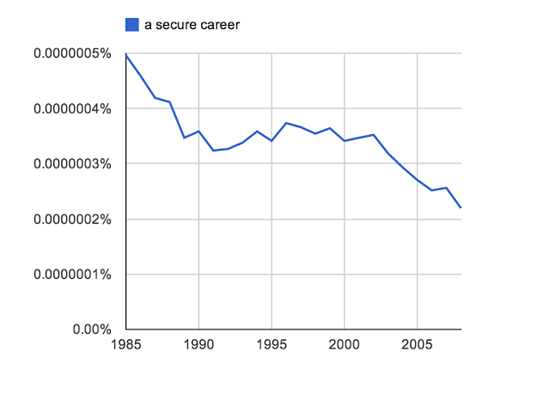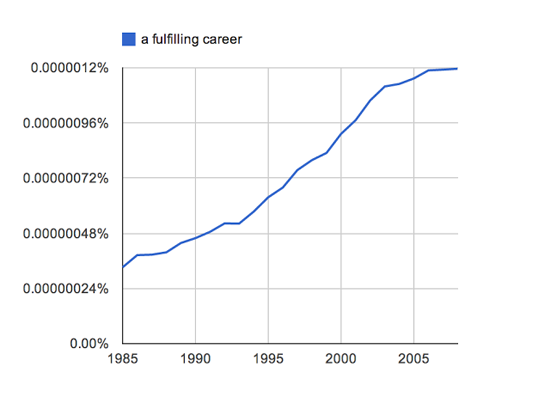How to use the difference between generations in IT-companies

People perceive any work from the point of view of their life experience and their values. The system of values is formed in childhood under the influence of economic, social, political, technological factors of the external environment. Therefore, the value systems of people differ depending on the historical period.
From early childhood, our brain learns to perceive information, to interact with the outside world. To do this, he sets himself patterns of behavior based on basic values. Already grown generation, born with the Internet and received access to any information. And this factor also had an effect on their brain.
People with different values look at many things differently. The same technology causes them, perhaps, the opposite feelings. Why it is necessary to understand and how to use - today we will tell in the article about the connection between IT and psychology.
Until generation X

Let's immediately understand the theory of generations. This theory, explaining the difference between the patterns of behavior of different generations, was formulated by William Strauss and Neil Howe in 1991, and described repetitive generational cycles in US history. Then the theory became widespread in many countries of the world, including Russia - the values of generations in many countries are the same, which became especially noticeable in the era of the Internet and mobile communications.
Before generation X, that is, before the generation of people born in different countries from 1965 to 1979, the majority of employees had one similar feature - they had knowledge and experience in one area, preferred not to change their field of activity. In the first half of the 20th century (as hundreds of years before), experts preferred to work in the same position. It is possible that in the USSR such features of generations persisted until the end of the 80s.
As you know, now one specialist not only can be an expert in different areas. Most often, he is simply forced to have experience in other areas of activity - otherwise, a more “capacious” professional will be invited to take his place. This does not mean that narrow profile specialists have completely disappeared. There are many of them now, but they do not catch the eye, they prefer not to take risks, they have been working in the same position for years.
The lack of multitasking and interactivity can be a serious problem in an IT company. On the other hand, representatives of modern generations (starting with generation X), striving for universality in the approach to knowledge, have a wide range of interests and skills, but at the same time do not have really deep knowledge in any one discipline.
Tim Brown, CEO of the well-known design company Ideo, prefers to hire employees that combine both the features of the “old school” generation and the current trends. We are talking about specialists who have deep knowledge in one area, but are able to switch to an adjacent discipline and master it well from scratch.
Tim Brown (and with him Procter & Gamble, Nike, and others) believes that the employee should be empathetic. This is important because it allows a person to imagine a problem from a different angle - to feel like someone else’s skin. In addition, the employee must be interested in other specialties, to show curiosity and enthusiasm.
What is more valuable, deep knowledge in one area or the desire to obtain knowledge in different disciplines? HR professionals conclude that the most valuable employees have the skills to share information and act interdependently. Simply put, the desire to constantly evolve and change is appreciated.
Generations Y, Z and beyond

Generation Y, the millenials, are people born between 1980 and the early 2000s. Y have become accustomed to technology, the rapid pace of life and new impressions, but their childhood fell on a technologically transitional period: the emergence of the Internet, mobile communications, the gradual introduction of computer technology. They still remember the time when the digital economy practically did not exist.
Generation Z - this is today's children born in zero. The childhood of two thousandth children is influenced by very different values - from Youtube, as the main source of knowledge, to gaining skills for future work in Minecraft. Yes, they say, today you can master programming, just playing Minecraft.
Children learn to program in Python, build fantastic worlds or working mechanisms of high complexity. Gamification allows you to use a huge number of patterns of behavior of the child as the basis for learning programming.
Already very soon a new generation will replace the generation Z. According to the theory of Strauss, the duration of one generation is 20-22 years. Every 20 years there is a new generation of people whose values are fundamentally different from the values of their parents. Our children will appear in the world of 5G, drones, unmanned vehicles, cybercrime, smart things, cryptocurrency and blockchain, 3D printers, incredible scientific discoveries and a new round of space exploration. The Strauss theory says that we can predict the behavior of the children of a new era — the generational change is cyclical. But the factors of technical progress are beginning to dominate all others, which as a result can distort the picture of reality.
What do people want to see generation Z

Different generations not only come to companies and create something in them. They are still customers, users. And each has its own requests. Consider this point on the example of interaction with the software.
One of the main differences is that the modern generation (born after 2000) tends to be more passive than the generation that grew up in the 1980s and 90s. The generation of modernity Facebook seems difficult and anachronistic (you need to search and add), and convenient - Tinder, where you only need to post photos.
Previously, people liked to manage something, to feel their control over the events. A young user just wants to press a button and get a result.
Changes are undergoing and interfaces. Following the logic of “perfect interface is the lack of interface,” programs lose the detailed menu and get gesture control (in the VSCO app, gestures became the only way to navigate).
The third significant change in software is associated with the growth of information flows. There is too much information. The user must be protected from information overload. Therefore, applications focus on a single function, social networks introduce an algorithmic tape, and Snapchat and some other applications destroy user content themselves.
The fourth change is due to the desire to engage in content creation. Therefore, in each messenger, you can create photos, videos, gifs, pictures and much more, and on the blockchain there are platforms in which instead of likes monetary rewards are used (in cryptocurrency) for any user action - additional motivation to generate content.
Let's not forget about the most obvious change in user preferences - emoticons, emoji, gifs. All communication without words is crucial. Representatives of the generation Z and, in part, Y do not like talking on the phone, but prefer chat rooms. Of the representatives of the generation Z, only 38% are ready to communicate with technical support by phone, and 31% do not want to spend time on it and prefer to look for help on various online resources.
How the world affects the brain
Generation Z representatives trust games more as teachers of life than of the school education system. The emergence of the first personal computers in the eighties affected a whole generation of children who knew computers. Remember yourself. Many began to understand computers when something didn’t constantly work for themselves. We learned to program in BASIC and write our own programs, creating something that previously did not exist in the world.
Modern children have advanced further in these skills. No one is surprised by the news about the student who found VK vulnerability and received two thousand dollars reward for it. Children write their own programs, while their parents at the same age played in the garden or worked at home.
Generation Y children learned from their mistakes. Generation Z communicates with someone who is much older than them and understands something. Through forums, social networks and instant messengers, children get the opportunity to get help from real professionals. Thus, they get new knowledge faster, learn faster and apply the information obtained more quickly in practice.
According to a study by ChildWise , a representative of generation Z uses a computer, tablet, smartphone, and game console every day. Any passion for technology has an impact on your future career.
Researcher Cal Newport has traced how stable work is losing popularity. Newport analyzed data from the English-language press for 20 years. It is noticeable how the popularity of references to “stable work” (a secure career) is falling and the popularity of “work for the soul” (a fulfilling career) is growing.


The new generation appreciates mobility, it is much easier to change jobs or even the country of residence. The big world of new technologies has such an impact that from early childhood one has to learn to analyze large amounts of information, look for new original solutions, work with several tasks at the same time.
Such an attitude towards the world causes rejection of the hard type of leadership. Employees in transitional periods between the generations of Y and Z can afford to criticize the leadership and cast doubt on the need to build a hierarchical structure.
There is a good example of a company in which the values of generation Z have been built into an absolute - this is Valve, in which there is no hierarchy and no formal management, chiefs and subordinates, positions and career growth. Valve has no fixed roles, and each employee has the right to decide for himself what he should do and where he can bring the maximum benefit to the company. Such a system also has disadvantages (if employees lose interest in a program, they simply stop doing it, regardless of the users ’wishes), but the company's impressive financial results indicate the effectiveness of the approach - Valve's profit from sales of games in 2016 was 3, 5 billion dollars.
And criticism of the approach
It would be a mistake to divide all people into categories, drive them into the rigid framework of behavioral stereotypes, label them. Prejudice towards people, judging only by age and belonging to a stratum, ultimately only harms. Even a hipster that matches all your social bias may surprise you with his personal qualities.
Certain features of the generation, allowing to segment the mass of people, should be taken into account, but the theory of generations should not be taken as the only correct guide to action.
All Articles